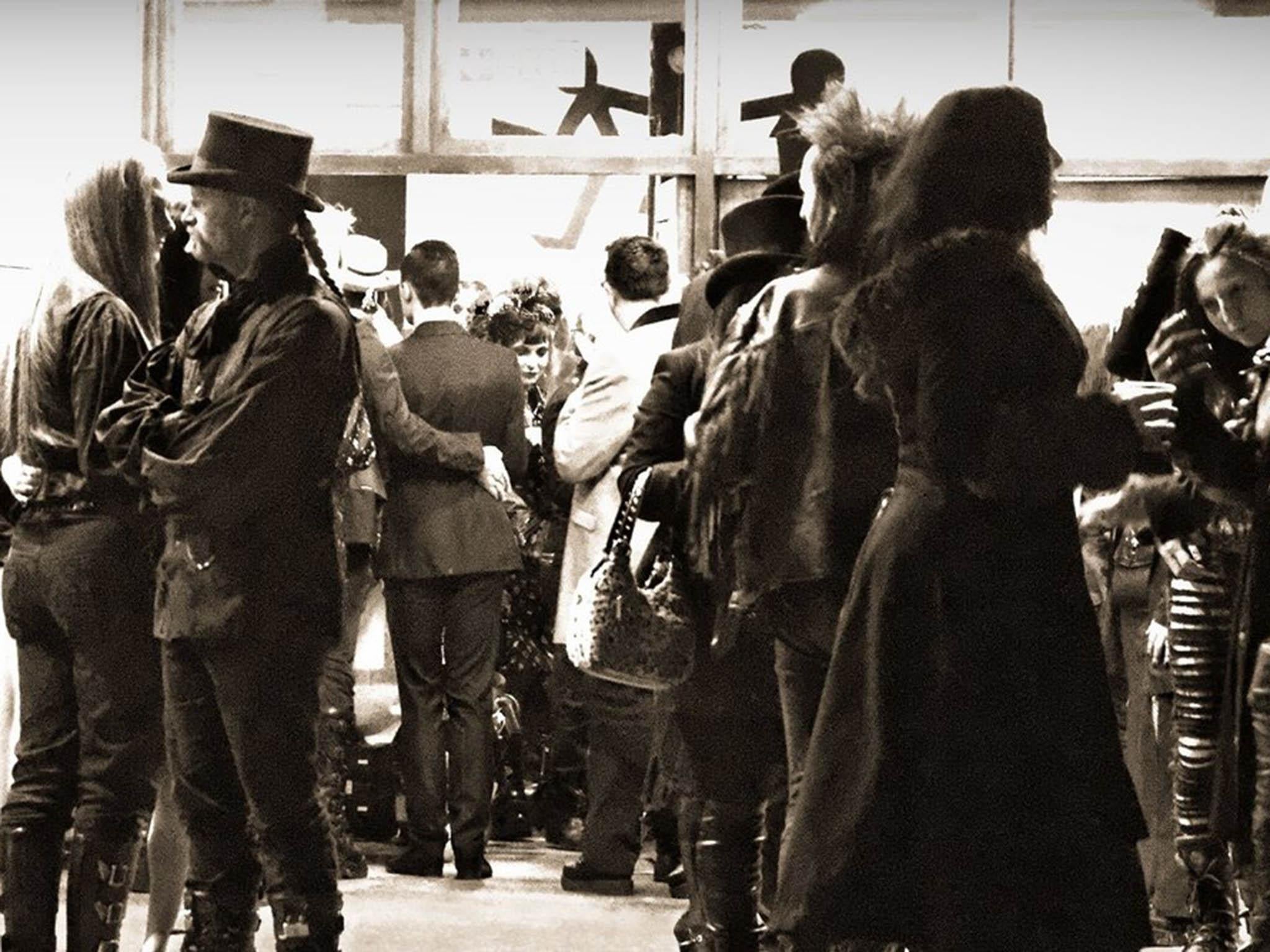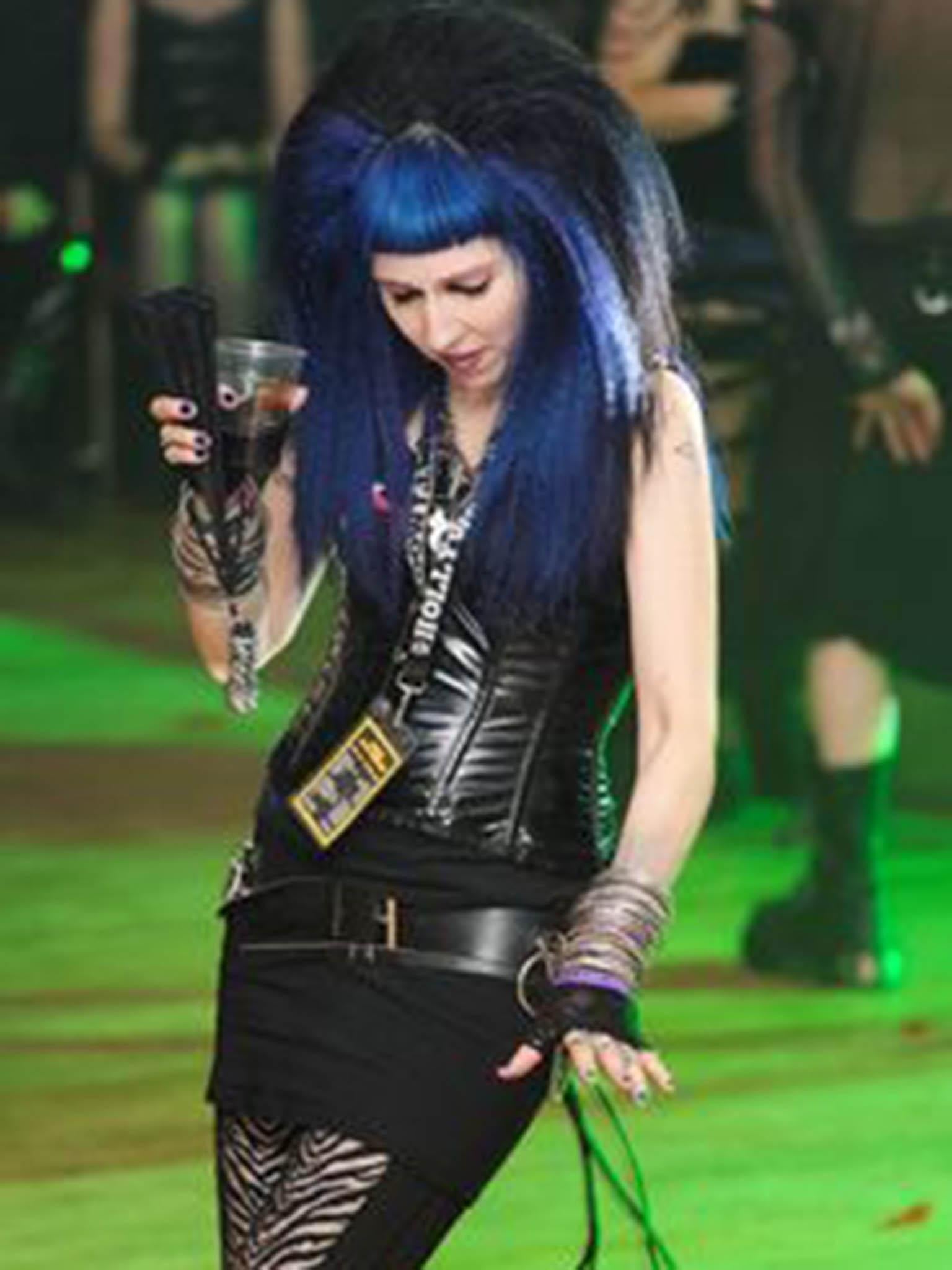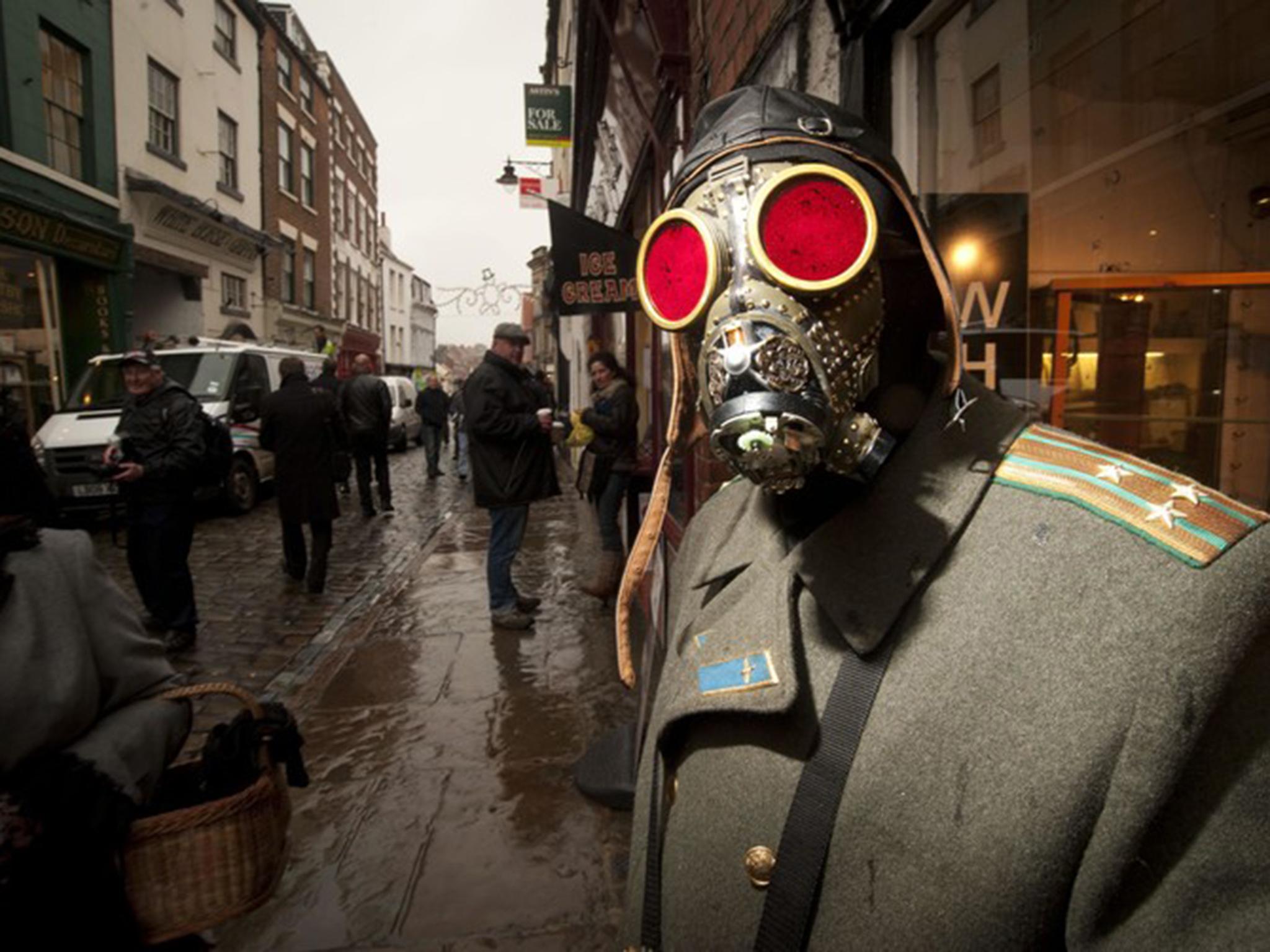Goth, steampunk and the state of subculture today
Subculture is on the decline, according to pundits. But a trip to Whitby on some weekends would demonstrate otherwise

Your support helps us to tell the story
From reproductive rights to climate change to Big Tech, The Independent is on the ground when the story is developing. Whether it's investigating the financials of Elon Musk's pro-Trump PAC or producing our latest documentary, 'The A Word', which shines a light on the American women fighting for reproductive rights, we know how important it is to parse out the facts from the messaging.
At such a critical moment in US history, we need reporters on the ground. Your donation allows us to keep sending journalists to speak to both sides of the story.
The Independent is trusted by Americans across the entire political spectrum. And unlike many other quality news outlets, we choose not to lock Americans out of our reporting and analysis with paywalls. We believe quality journalism should be available to everyone, paid for by those who can afford it.
Your support makes all the difference.In a global environment in which blandness seems to rule and people are more connected – and therefore arguably more homogenised – than ever, subcultures might seem to be on the decline.
But this is far from the case. Subcultures encompass a broader range of people than just today’s youth, as University of Surrey’s Dr Paul Hodkinson’s research on goth and ageing has shown.
Twice a year each year, a curious event occurs in a small seaside town – Whitby Goth Weekend. Originally organised as a goth gathering in 1994, the festival is now one of the larger events in the European goth calendar.
The festival, the most recent of which occurred in the first weekend of November, no longer attracts only goths – many steampunk enthusiasts, among others, have started to attend, too. So what does this say about subculture today?
Goth emerged in the late 1970s, and is often associated with the popularity of The Sisters of Mercy (although the lead singer, Andrew Eldritch, rejects any association), as well as The Damned, Bauhaus, Siouxsie and the Banshees, and The March Violets.

The music is diverse, but is often characterised by a heavy drum beat (on a drum machine), rock guitars, low register male vocals, and as a counterpoint, a high register female voice. But it isn’t simply a music culture. For many, goth is a lifestyle choice.
Goth is characterised most famously by the notion of a dark aesthetic, so that sartorial choice is often influenced by a melancholic sensibility (black clothes, piercings, tattoos). This is not to say the culture is miserable, as Catherine Spooner’s forthcoming book carefully notes. Indeed, Whitby Goth Weekend’s wryly humorous side is obvious if we look at the festival’s annual football event, featuring black-clad footie supporters, and players with improbably long, dark hair.
Dracula’s backyard
While the foundations of Whitby Goth Weekend relate to a very specific subcultural and musical affiliation, in recent years this has somewhat diversified. Whitby now attracts many attendees who might not identify as goths. They celebrate the spectacle of fashion and the photographic opportunities. Many of these people are drawn to the literary legacy of the Abbey and St Mary’s Church, which featured in Bram Stoker’s 1897 novel, Dracula. This has prompted much chagrin from some attendees, who see it as a detraction from the subculture itself.
There are, of course, long standing debates in theories of subculture about the nature of authenticity and boundary marking, including writer Sara Thornton’s idea of “subcultural capital”, which she maintains is linked to an assertion of distinctiveness, and a claim to subcultural authority. Ross Haenfler notes that while individuality, tolerance and creative free play are often vaunted as markers of subculture, in practice, there are always “battles over hierarchy”.
But the festival, as much as the subculture, does not stand still. Recent appearances by synth-rock outfit William Control, and the London-based darkwave band, Cold in Berlin, testify to a new type of sound, and a different generation of attendees.
Such diversification also includes other genres, such as steampunk. In 2007, James Richardson-Brown (Captain Sydeian) organised the first steampunk meet-up in Whitby, to coincide with the festival. Since that time, steampunks have congregated alongside the traditional community in a series of fringe events hosted at Whitby's The Rifle Club. This is not to say that there isn’t an overlap in these subcultures: one of the most pre-eminent steampunk bands, Abney Park, have headlined at the main event three times. Such a shift indicates a fluidity within both subcultures.
‘I love a girl in goggles’
The author KW Jeter is usually credited with coining the word “steampunk”, which he later identified as “a taste for brass and copper and the ticking, hissing mesh-&-grind of Victorian technology”. He characterises steampunk as an aesthetic resistance to the smooth surfaces of contemporary mass production. Many steampunk participants also embrace this aspect of retro-technology in their attire.
Notably, unlike goth, steampunk originated from literary rather than music culture: it embraces anachronism and science fiction, with reference points including figures such as H G Wells, Mary Shelley, and Jules Verne. Steampunk at its best is avowedly political. The Steampunk Magazine represents a repository of radical politics, including debates around gender, activism and anti-capitalism.

A performer such as Unwoman, whose stage name is tellingly derived from Margaret Atwood’s dystopian novel, The Handmaid’s Tale (1985), engages with many of these themes in her 2012 album The Fires I Started. At the same time, The Men That Will Not Be Blamed For Nothing emphasise the “-punk” aspect of the genre, castigating the inequalities of the Victorian age in songs like “Third Class Coffin”.
Steampunk is synonymous with sepia tones, alongside a nostalgic but not uncritical approach to the Victorian period. It encompasses technology, and arts and crafts practice, but there is a much darker side, too, which Captain Sydeian and others have characterised as Steamgoth.
The artist Dr Geof perhaps represents this steampunk/goth overlap most effectively. His art combines historical anachronism, whimsy, subcultures, fetish, and gentle satire. Indeed, he might usefully be situated in broader debates around Neo-Victorianism.
So where are UK subcultures headed from here? The idea of synthesis between subcultures does not necessarily spell their end – indeed, ideas of what Hodkinson calls a “pick-and-mix” approach characterise contemporary debate around these identities. For Whitby attendees, it’s possible any resentments might be tempered in the future. The steampunk community has secured its own weekend in Whitby in February 2017, as well as having several other events dedicated to their particular strand of subculture – The Lincoln Asylum steampunk festival set for August 2017 – being the most obvious of these. Even in the era of globalisation, it seems the idea of a localised belonging is very important.
This article first appeared on The Conversation (theconversation.com). Claire Nally is a senior lecturer in 20th-century English literature, at Northumbria University, Newcastle
Join our commenting forum
Join thought-provoking conversations, follow other Independent readers and see their replies
Comments